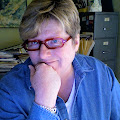WHEN DO "AHA" MOMENTS COME FOR YOU? If they rolled up on your doorstep with unfailing regularity, you'd take them for granted. They wouldn't elicit an "aha!" at all. But real "aha" moments, for me at any rate, come after stretches of concerted problem-solving and reflection. They more often occur as a prolonged unfolding of understanding rather than in one flash of insight.
So it was with a strategic planning committee I'd been working with for months. Our regular meetings were moving well through the obstacle course of mission refinement, goal development and strategy creation. But it wasn't until we were buried knee-deep in strategies and tasking that some very forthright conversations started to take place.
As the morning fog lifts from the landscape, this team began to articulate -- as a group -- that its resources for at least the short-term had to be spent on strengthening its organizational core. Board and staff development, along with financial management and planning, were without question a top priority. How will board leadership be chosen? What is the role of a nominating committee in a 21st century nonprofit? What approaches can be employed to integrate all fundraising activities?
The animated discussion around these and dozens of other questions was unlike any other meeting of this committee. Was it because we had moved from the theory of strategic planning into the very real realm of practice? I think so. We began to see where and how earlier decisions about mission, goals and strategies would need to be played out. We began to make concrete connections between all the plan's elements. But, it didn't happen until now -- now as we near the end of the formal planning process, where tasking strategies challenged us to connect all the dots. Aha!!Photo: AHA from St_A_Sh



Comments